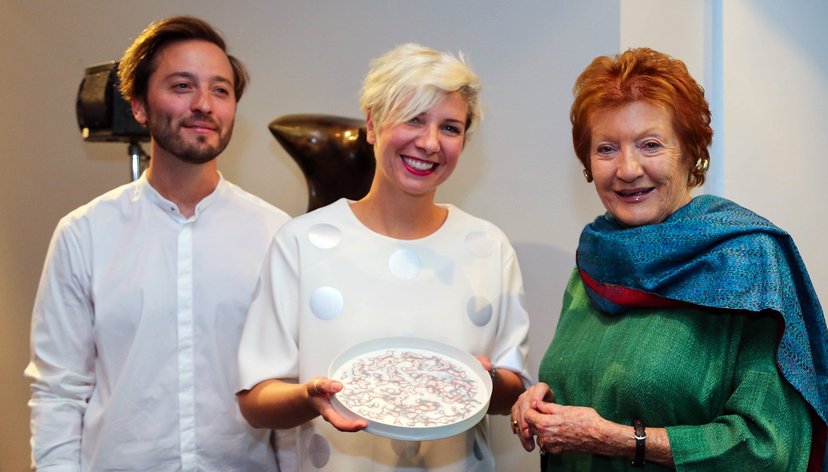Key details
Date
- 2 July 2021
Author
- Professor Jeremy Myerson
Read time
- 2 minutes
Professor Jeremy Myerson celebrates thirty years of the Helen Hamlyn Centre for Design at the RCA with his new book, Designing a World for Everyone: 30 Years of Inclusive Design.
Key details
Date
- 2 July 2021
Author
- Professor Jeremy Myerson
Read time
- 2 minutes

The Helen Hamlyn Centre for Design, which celebrates its 30th anniversary this summer, is today the Royal College of Art’s largest and longest-running centre for design research.
But it wasn’t always like that. The centre started life in 1991 as a small research group called DesignAge, which was dedicated to researching an unfashionable subject – design for older people – and struggled initially to be taken seriously within the RCA.
Quickly, however, things began to change. In 1994, the group’s director Roger Coleman defined the term ‘inclusive design’ at a Toronto conference, an academic first; a year later, DesignAge was given the Queen’s Award for Higher Education, which turned heads. And in 1998, this small but influential team of researchers significantly expanded its remit, reinventing itself as a centre for the study and practice of inclusive design – design for all ages and abilities.
The Helen Hamlyn Centre for Design, which I co-founded with Roger Coleman and directed for 16 years, would go to build an extensive portfolio of collaborative projects, pioneering new research methods, coaching designers at all levels in the approach and bringing a more inclusive way of thinking about design to international attention.
Many of our inclusive design projects have been influential in fields as diverse as hospital safety, urban transport, care home planning and workplace futures. From a landmark redesign of the emergency ambulance to new proposals for food packaging, mobile technology and community lighting, the centre’s work has touched all aspects of life.

However, none of this would have happened without the vision and generosity of Helen Hamlyn, an RCA alumna, designer and social philanthropist, whose charitable trust has supported the work of the centre since the very beginning – a sustained and unbroken record of patronage stretching back 30 years. Just before the centre that bears her name was launched, Helen Hamlyn wrote:
"I have, for a long while, been concerned about those people traditionally overlooked by designers – people who are excluded due to age or physical disability, for example. The aim of our new centre is to address these marginalised groups in society by developing practical applications of academic and creative thinking in co-operation with commercial partners. The centre should effect real change by putting a socially inclusive approach firmly into the mainstream of design practice”.
These words set a template for combining social activism with creative design and commercial application – and guided the centre’s approach from the start. Today, the Helen Hamlyn Centre for Desig, led by director Rama Gheerawo, is developing a new platform to develop products and services for the longevity market. Its name is the Design Age Institute, so bringing the story full circle.
That story is chronicled in a new book I have written – Designing a World for Everyone: 30 Years of Inclusive Design, which has been published by Lund Humphries. The book charts the history of inclusive design through the lens of the Helen Hamlyn Centre for Design’s own projects in the field over three decades.

To do this, I’ve picked 30 everyday artefacts and environment and explored our influence on them. These cases vary in scale. Some are simple, hand-held objects such as a shatterproof beer glass, a jam jar with a square lid for easy opening or a carbon-fibre crutch. Others form part of large and complex environments or systems – the care home, hospital, streetscape, riverfront or airport, for example.
Some design solutions have reached the market or influenced practice; others we can file under ‘ideas for the future’. All reflect an inclusive approach which we might describe as designing with people, not designing for people. In 2021, a pandemic-riven world demands an inclusive design approach more than ever.
